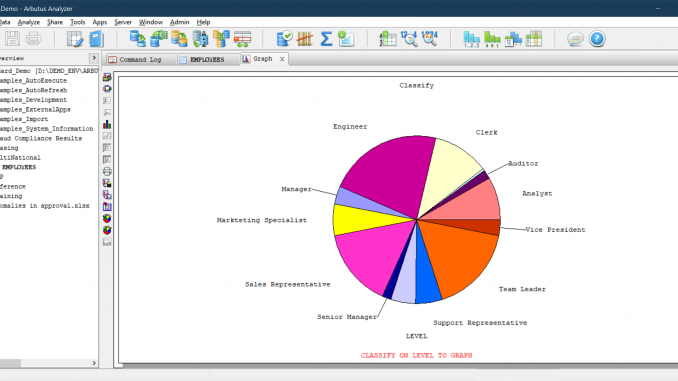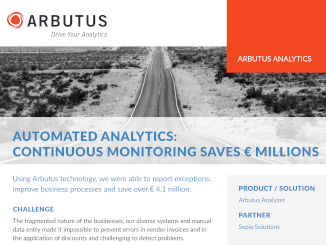
Powerful data analysis features of Arbutus Analyzer
People use different metaphors to describe Analyzer. Some call it a “Swiss army knife” because it can be used for so many things. Some describe it as a “toolbox” full of data analysis tools. What it is designed to be is the right tool for departments where audit, fraud and business analysis needs to occur within a diverse and changing data environment by users with varied, but valuable skills and experiences. We have listed some, but certainly not all, of Analyzer‘s capabilities in meeting the demanding needs of our users.
Data Integrity + Profiling
- Verify
used to identify data validity errors in your data - Statistics
calculate profile statistics such as highest, lowest and range on numeric or date fields - Stratify
count the number of records falling into specified intervals (strata) of numeric or elapsed time field - Classify / Summarize
generate summary data use one or multiple key fields - Read only
unlike spreadsheets, your raw data sources cannot be changed when using Analyzer, ensuring the integrity of your analysis
Data Analysis
- Age
perform an aging analysis on any appropriate date field - Crosstab
used in the same way as a pivot table in Excel, Crosstab creates hyperlinked summary results for easy drive down capabilities - Gaps
identify any gaps in a sequence of numbers - Duplicates
test for a wide range of duplicates from exact to fuzzy
Usability
- Sharing
from a desktop-only environment, create shared folders that all members of your team can use to shared data sources, scripts and results - Interface
Analyzer is designed to give you the best interface between your data and the analysis you want to perform
Audit-Specific
- Benford’s
easily apply a Benford’s Law analysis to your data file - Sampling
generate monetary unit and record samples. Analyzer can also be used to calculate your statistically valid sample size - Self-documenting log
all analysis and results generated by Analyzer are recorded in a read only log file
Multiple data sources
- Join
an intuitive interface, including a Venn diagram, for bringing together different data sources using a wide range of joins - Relations
easily create logical relationships between multiple data sources or recreate the relationships from among different database tables - Compare
commonly used to compare files from two different periods of time to identify what fields have changes and/or what records have been added or deleted - SQL
execute the advanced join capabilities of SQL from within Analyzer - Merge / Append
used to combine or append data sources of the same structure
Advanced
- SQL
easily Combine the strengths of Analyzer with the unique, powerful capabilities of SQL - Scripting / Procedures
create customized, repeatable analytics, both simple and complex using the purpose built analysis language of Arbutus - Functions
over 100 functions to support data analysis from categories such as Fuzzy matching, Conversion, Date/time, String, Bit/Char, Financial, Logical and Math
Data Access
- Multiple Data Sources
define and access a wide range of data sources including most databases, Excel, PDF’s and XML - Direct Access
have live, direct access to databases



